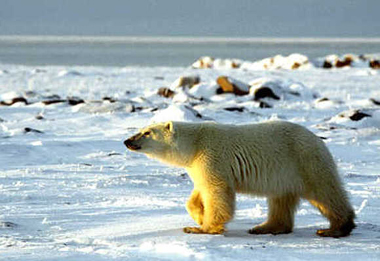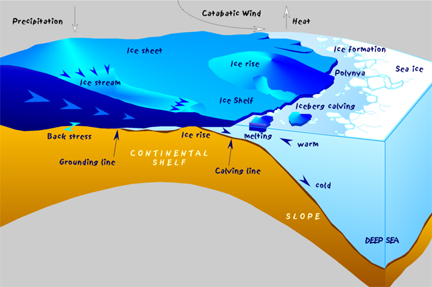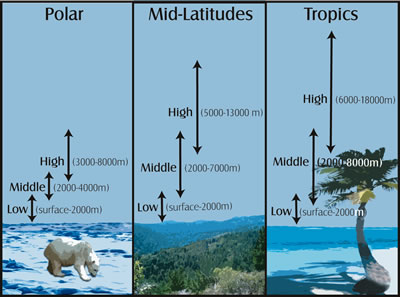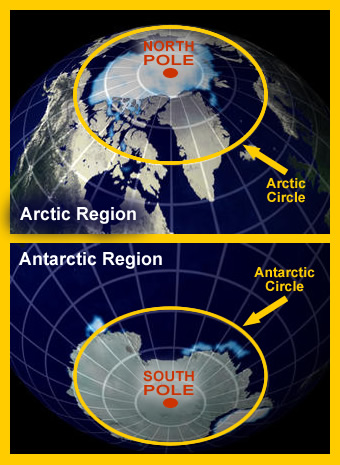Earth's Arctic and Antarctic Regions showing location of the Arctic and Antarctic Circles and the geographic North and South Poles.
Original Windows to the Universe artwork by Lisa Gardiner using images from NASA.
Where Are the Polar Regions?
The Polar Regions are the areas that are near Earth's North and South Poles.
- The area near the North Pole is called the Arctic. Most of the Arctic is ocean water with ice on it. The ocean is called the Arctic Ocean. There is also some land in the Arctic including the northern parts of Europe, Asia, and North America.
- The area near the South Pole is called the Antarctic. Most of the Antarctic is land, not ocean. The land is the continent of Antarctica. There is an ocean around Antarctica called the Southern Ocean.
Day and Night
If you live in a place that is far from the equator, you may have noticed that during winter there are fewer hours of daylight each day than in summer. During summer you might have found that the Sun does not set until after you eat dinner. During winter you might have found that the Sun sets before you eat dinner. This is because of the tilt of Earth’s axis. Earth's tilt is the reason for the seasons. The closer you are to one of the Poles, the less daylight there is during winter days.
Right at the Poles, the Sun shines for the entire summer and it is dark for the entire winter. This makes a year like one long day! The Sun rises in spring, reaches its highest point in the sky in summer, and sets in autumn. So the Sun is only in the sky during the warmer months of the year. When the Sun is in the sky at the South Pole, it is the dark winter months at the North Pole.
You might also be interested in:

In the Arctic, you will find the Arctic Ocean surrounded by the continents of Europe, Asia, and North America. You will find the geographic North Pole and the magnetic North Pole there; both are in the
...more
What Will You Find There? If you travel to the South Pole, you will find the continent of Antarctica surrounded by the Southern Ocean. The geographic South Pole is marked by a large sign that scientists
...more
Antarctica is the coldest, windiest, and driest continent on Earth. It is about one and a half times the size of the United States. Almost all of Antarctica is covered with a thick layer of ice called
...more
The Southern Ocean is sometimes known as the Antarctic Ocean or South Polar Ocean. It surrounds Antarctica in the South Polar Region. The Southern Ocean is a bit different from other oceans. Other oceans
...more
The United States has dedicated a new scientific station at the geographic South Pole. This is the third station the United States has operated at the South Pole since 1957. The new station is called the
...more
Antarctica is the coldest place on Earth. It is even colder than the Arctic! Temperatures as low as -129 degrees F (-89 degrees C) have been recorded. Near the South Pole, the average temperature is only
...more
Different types of clouds can be found at different heights in the sky. Latitude also plays a role in how high a cloud is in the sky. Most clouds we see, including clouds that are related to weather, are
...more














